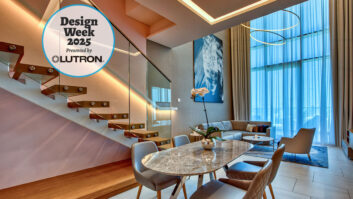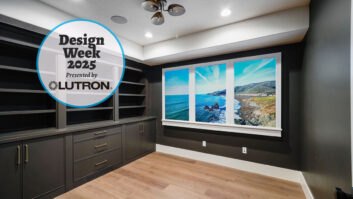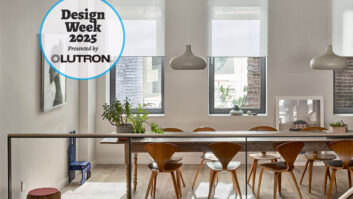We just won a $60K-plus job without building a proposal. How? We didn’t sell a $60K job; we earned a green light to design a properly engineered proposal and charged a design retainer of four percent. Our client will receive a complete set of drawings and properly engineered proposal that he can use to shop around to his heart’s content. Will he shop it around? Maybe, but probably not. Wouldn’t it be great to get paid for building proposals and take competitive bid jobs off the street?

Image: Thinkstock
As we improve our processes internally, we’re finding it easier to convince clients that it is a good idea to have a solution properly engineered in order to effectively compare apples to apples. How many times have you built a proposal for a client, only to be told a few weeks later that they had gone a different direction because your number was too high? You then find out your client went with a lesser quality solution that you could have easily price matched if given the chance. After experiencing this over and over, it’s enough to drive you nuts.
Instead of letting our prospective customers compare apples to earthmoving equipment, we’re increasingly engaging with them very early and showing off our sample documentation to demonstrate the benefits of a properly engineered solution (very similar to the way an architect might show a set of house plans to build their own credibility.) We then gather their project requirements through a conversation about finding friction. We use friction and pain points to float suggested solutions.
We will ideally leave the first meeting with a budget range, and then prepare a high-level conceptual drawing showing the project in broad terms. We’ll then look for client feedback as to where they see themselves along the budget range continuum. For example, if we show off a conceptual drawing with a budget range of $60K-80K, we’ll want to understand if they are on the low or high side. We have found this to be a critical part of the process. Our sales manager calls this a “trial close.” It’s a great way of getting buy-in on a number without being made out to be the bad guy. This way, we stay shoulder to shoulder with the client versus getting into the adversarial role all too common in sticker-shock scenarios.
We are constantly refining our design retainer approach. We’ve spoken to other integrators who’ve used methods like:
1. Charging $1 per square foot to produce a technology assessment
2. Charging a small percentage based on the low end of a budget range
3. Charging a flat fee
4. Offering a menu of design and engineering services and letting the client pick
From our experience, it feels like having multiple design retainer options is a good idea based on personality type. A colleague recounted to me his clients in one market were just fine with the square footage approach but recoiled from it in another market, wanting more detail (like the menu listed in number 4 above). Design retainers are no different from any other sale—different strokes for different folks. We’ve succeeded and failed by applying the wrong or right approach many times. It’s only recently that we have become more intentional about figuring out which approach is most suitable for the client before we begin the engagement. We try to find out as much as we can about the client before our first meeting. LinkedIn and Facebook are great resources. In addition, if it’s a referral, consider asking detailed questions about the prospect. The referrer will appreciate your attention to detail and be more likely to send more business.
Do you have any qualification techniques that work well? Are you collecting design retainers? Share your feedback below in the comments.
Stay frosty and see you in the field!







